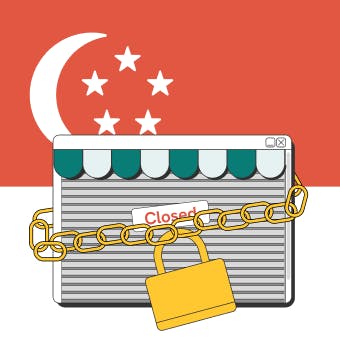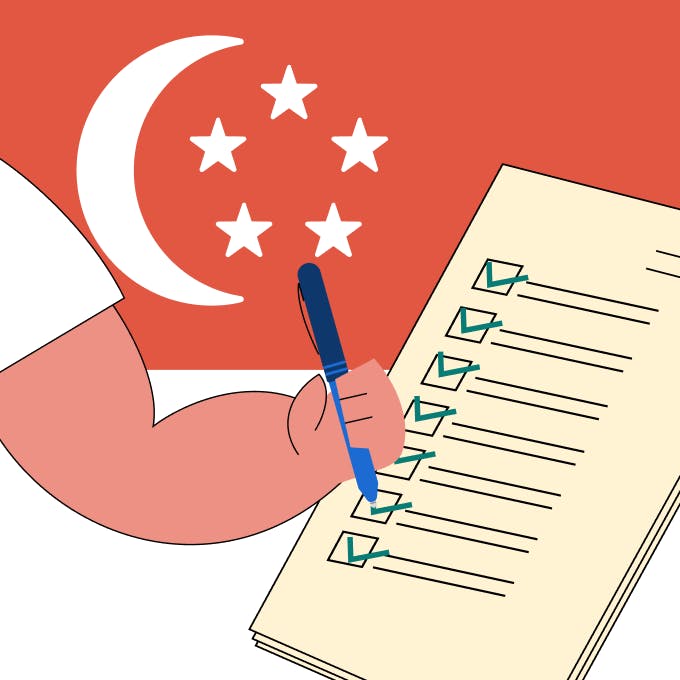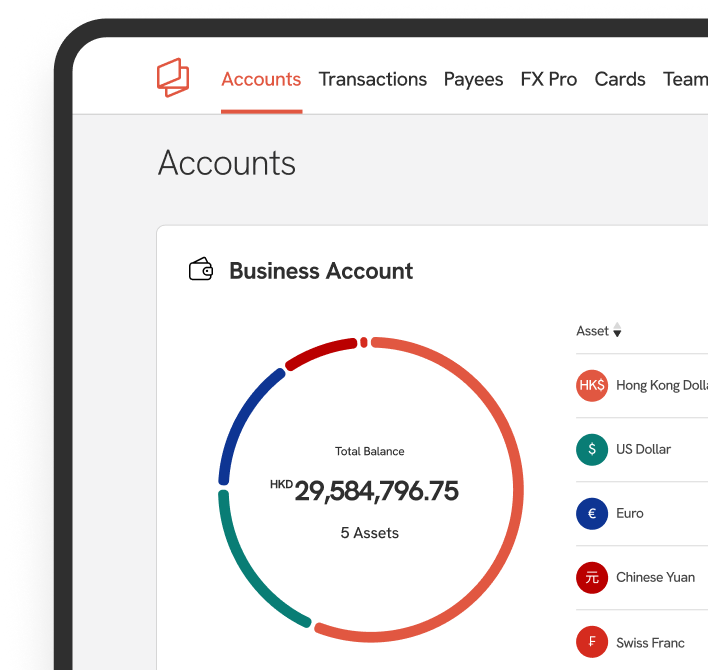Key Takeaways
Two main options to close a company in Singapore are Striking Off and Winding Up.
There are three methods to wind up in Singapore, they are Members Voluntary Winding Up, Creditors' Voluntary Winding Up, and Compulsory Winding Up.
Choosing to strike off is more cost-effective as it doesn't involve liquidation costs, and there are fewer chances of objections or issues.
The decision to close a company after building it through all the hard work can be difficult. However, it may be necessary to close it. With the recent global inflation crisis, some businesses may inevitably have to close down. In Singapore, there are two ways to close your company. You can strike off or wind down your company, depending on its tax status, state of its assets, and indebtedness of your business.
In this guide, we will walk you through the process of closing down a company in Singapore as a business owner and the necessary process to close the business properly.
Why Close Down a Company?
Not all business ventures work out as planned. While some businesses endure and prosper for decades, others reach a point where closure becomes inevitable.
Numerous factors can contribute to this decision – insufficient cash flow, inadequate profits, or a desire to shift focus to other ventures. Despite the disappointment of closing a company you diligently established, challenging circumstances may necessitate tough decisions.
It's possible that your company originated from a fool-proof business concept accompanied by a meticulously crafted business plan. However, even with the best intentions, some businesses face failure. Obstacles such as talent scarcity, funding issues, and market access challenges can contribute to these difficulties.
Operating a business is demanding, and recognising when to cease operations is crucial to avoid further distress. Indicators that may signal it's time to consider closure include:
- Falling short of annual revenue projections.
- Poor product-to-market fit
- Lack of or diminishing passion to continue running your own business
- Encountering health issues while running your own business
Basic Information About Closing a Company in Singapore
When you decide to close a limited or private limited company in Singapore, the first step is assessing its financial state. If your company is insolvent, the only choice is to wind it up. However, if your company is free of debt and financially stable, you can decide between winding up or striking off.
Although both options may seem alike, most companies opt to strike off in Singapore. Striking off takes around four months, while winding up can take years to settle accounts.
Choosing to strike off is more cost-effective as it doesn't involve liquidation costs, and there are fewer chances of objections or issues.
Striking Off Option
To strike off a company in Singapore, you can follow the guidelines outlined in Section 344 of the Companies Act 1967. According to Section 344 of the Companies Act 1967, the Company Registrar in Singapore can strike off a company from its register. As a company director, you have the option to request the Accounting and Corporate Regulatory Authority (ACRA) to remove your company's name from the register. ACRA will consider your application if it has valid reasons to believe that the company is not actively engaged in business. To qualify for striking off, your company must meet specific criteria, including:
- It has not started business since its incorporation or has ceased trading.
- It possesses no existing assets and liabilities at the time of the application, with no potential future assets or liabilities.
- No outstanding debts are owed to the Inland Revenue Authority of Singapore (IRAS), Central Provident Fund (CPF) Board, or any other government agency.
- It is not under any ongoing or pending regulatory action or disciplinary proceeding.
- There are no outstanding charges in the charge register.
- It is not involved in any legal proceedings, either within or outside Singapore.
- The majority or all of the directors authorise the applicant to submit the online striking-off application on behalf of the company.
- If a bank account is attached to the company, the account must also be cleared out.
Before initiating the striking-off process, ensuring that the company has no outstanding tax credits is crucial. In the event of the company's dissolution, any tax credit owed will be transferred to the Insolvency and Public Trustee’s Office (IPTO) rather than directly to the company. Shareholders of the dissolved company can approach IPTO to claim the tax credit, though charges may apply for processing the claim.
Winding Up Option
There are multiple winding up methods. In order to determine which options to use, you can use the cash flow and balance sheet test. A company is considered insolvent if:
- It fails to meet a current debt demand according to the Cash Flow test.
- The company shows a deficit when balancing total liabilities against total assets through the Balance Sheet test.
Additionally, under the Insolvency, Restructuring and Dissolution Act 2018 (IRDA), a company is deemed insolvent if:
- A creditor enforces a court judgment or order for a sum of money against the company. If the creditor doesn't receive the entire amount, the company is declared insolvent.
- The company fails to pay or secure a sum of SGD $15,000 or more to the creditor within three weeks after the demand was served.
- The court is confident that the company cannot settle its outstanding debts, considering both current and potential liabilities.
Members Voluntary Winding Up
Members' voluntary winding up is a process initiated by a company's directors when they believe that the company can fully settle its debts within 12 months after the commencement of the winding-up process.
In this voluntary winding-up scenario, the company appoints a liquidator or provisional liquidator to oversee the winding-up process and handle the necessary notifications as required by the Companies Act/IRDA.
During this process, the company's assets are liquidated, turning them into cash, which is then used to pay off the company's debts and liabilities. Any remaining assets or surplus cash is then distributed among the company's creditors and shareholders. This distribution marks the closure of the company.
A company may opt for voluntary winding up in situations such as:
- Insufficient profit to sustain the business;
- Disagreements among shareholders; or
- Breach of statutory duties by the company or its members.
Here are the steps to follow in the process of members' voluntary winding up:
Step 1: Declaration of Solvency
- The majority of directors sign the Declaration of Solvency, including an attached statement of affairs.
Step 2: Extraordinary General Meeting (EGM)
- Convene an EGM within 5 weeks to initiate the winding-up process.
- During the EGM, appoint liquidators and approve their compensation.
Step 3: Special Resolution
- Pass a special resolution at the EGM to officially wind up the company.
- Seek the assistance of a professional liquidator.
Step 4: Solvency and Publicity Requirements
- Meet the necessary solvency and publicity requirements.
Step 5: Filing with ACRA
- File the special resolution with the Accounting and Corporate Regulatory Authority (ACRA) within 7 days.
Step 6: Advertisement in Newspapers
- Advertise the winding down of the company in a Singapore newspaper within 10 days, covering each official language (English, Chinese, Tamil, and Malay).
Step 7: Tax Clearance with IRAS
- Notify the Inland Revenue Authority of Singapore (IRAS) for tax clearance.
- Submit a final set of management accounts and tax computations until the business cessation date.
Step 8: Final Meeting
- Decide on the final meeting date.
- Publish the final advertisement after obtaining tax clearance from IRAS.
- During the final meeting, the liquidator informs members about the winding-up process and the disposal of the company's assets.
Step 9: Submission to ACRA and Official Receiver
- Within 7 days after the final meeting, the liquidator submits a return to ACRA and the Official Receiver, providing details of the meeting along with a copy of the account.
Step 10: Dissolution
- The company is dissolved three months after the return has been submitted.
- Note that the court can declare the dissolution void within 2 years after the date of dissolution.
Creditors Voluntary Winding Up
While it's termed creditors voluntary winding up, the decision to wind up the company is ultimately made by the company’s directors, not its creditors.
Typically, directors opt for this method when they believe the company can't sustain its operations due to liabilities, cannot settle its debts within 12 months of winding up, and no Declaration of Solvency is filed.
In this process, a liquidator or provisional liquidator is appointed to wind up the company's affairs and handle the necessary notifications as per the Companies Act and the Insolvency, Restructuring and Dissolution Act. However, the company's creditors still have a say in deciding whether the company should be wound up and who will serve as the liquidator. Creditors actively participate in this decision-making process through a creditors meeting.
Here are the steps involved in the process of creditors' voluntary winding up:
Step 1: File Declaration with the Official Receiver
- Submit a declaration with the Official Receiver.
Step 2: Convene Extraordinary General Meeting (EGM) with Creditors
- Organise an EGM involving the company’s creditors to establish the reasons for winding up.
Step 3: Appoint Provisional Liquidator
- In the subsequent EGM, appoint a provisional liquidator.
Step 4: Pass Resolution for Creditors' Winding Up
- Hold another EGM to pass a resolution for creditors' winding up.
Step 5: Meeting with Creditors
- Within a month of the declaration date, the company's directors must meet with creditors.
- If a resolution in favour of winding up is passed, appoint a provisional liquidator chosen by the creditors.
Step 6: Notice of Appointment
- Lodge a notice of appointment, along with a copy of the declaration, with the Official Receiver.
- Advertise this notice within 14 days in at least four local daily newspapers in English, Malay, Chinese, and Tamil languages.
Step 7: Provisional Liquidator's Tenure
- The provisional liquidator remains in place for one month or until the appointment of a liquidator unless the Official Receiver extends the appointment.
Step 8: Creditors' Meeting
- After the directors propose creditors' voluntary winding up, call a meeting of the company's creditors on the same day or the next day after the directors' meeting.
- Notify creditors by post and announce the meeting in a local newspaper seven days in advance.
If the company is voluntarily liquidated, whether through members’ or creditors’ voluntary winding up, these are the next steps:
Step 1: Halt Business Activities
- Upon passing the special resolution, the company's business activities must cease unless deemed necessary for successful winding up by the liquidator.
Step 2: Cease of Directors' Powers
- Directors' powers cease unless shareholders agree otherwise, and only with the liquidator's consent..
Step 3: Void Transfer of Shares
- Any transfer of shares is void unless approved by the liquidator or ordered by them.
- The company's members' status cannot be changed.
Compulsory Winding Up
Compulsory winding up occurs when someone external, such as a creditor, liquidator, or receiver, initiates the closure of a company, as opposed to its owners, like directors. This process requires filing an Originating Summons in court.
Several reasons may lead to the compulsory winding up of a company, including insolvency (inability to pay debts), failure to submit statutory reports, neglecting statutory meetings, not commencing business within a year of incorporation, or engaging in illegal activities.
The court can appoint a liquidator to wind up the company if necessary. If the court appoints no liquidators, the Official Receiver assumes the role of the company's liquidator. The liquidator files the notice of their appointment and advertises the company's winding up within 14 days in at least four local daily newspapers, as mandated by the Companies Act and the IRDA.
Key effects of a company’s compulsory winding up include:
Voided Transactions:
Any disposition of company property, transfer of shares, or change in the status of company members made after the court-initiated winding-up process begins is deemed void.
Liability for Fraudulent Activities:
A liquidator, creditor, or contributor of the company can petition the court to hold individuals responsible for or involved in fraudulent business activities before winding up liable for the company's debts.
Offsetting Mutual Credits or Debts:
In cases where a company and a creditor have mutual credits, debts, or dealings, these can be offset against one another. This means that a creditor or the company can claim only the balance due on each side of the counterclaim.
Final Steps of Closing a Company
Here are the rest of the necessary steps you have to take in order to close your company successfully.
- Business closure announcement
It’s time for you to announce the news to your employees. Take time to think about how you want to announce it, but usually, it will cover the why, when, what, and how. Your employees will also be interested in finding out about their severance packages if any, and unused employee benefits. - Settling debts and taxes
If you owe creditors and cannot pay them, you must inform them of your closure plans. In case the creditors file claims against your company for unpaid loans, you will need to verify whether these claims are accurate.
Check whether you have any outstanding tax issues. You can either access myTax Portal to check or call the IRAS 24-hour toll-free hotline. - Returning capital to shareholders
- Laying off your employees
- Terminating office space rental
- Ending existing contracts with suppliers and service providers
- Announcement of business closure to clients
Conclusion
In conclusion, closing your company is not an easy thing to do. Always think of other ways to preserve your company if possible. Consider keeping your company dormant for companies closing due to low business activities. A dormant company in Singapore means that it does not exceed SGD $500,000 in assets during the financial year and is not a listed company or a subsidiary of a listed company. However, if you have decided to close down your company, follow the correct procedure to avoid potential issues. Fret not, you might be closing this company, but it does not mean you will not be able to build a successful business next. However, if you do have a bank account attached to the Company and you are considering re-commencing business in the future, it is still best to keep the company instead of closing the company as opening a bank account is getting harder these days due to stricter compliance and anti-money launder rules and regulations by these financial institutions.
FAQs
What are the options available to close down a company in Singapore?
You can either strike off your company or wind up depending on the criteria and requirements met for each method.
How many methods of winding up are there?
How long does it take to close a company in Singapore?






